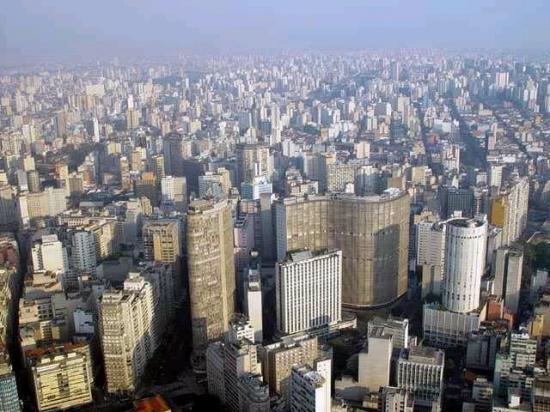Can you imagine yourself living in hell? Can you imagine you, your family and your friends having to work and study in a place that was completely taken by violence and hate ? Well, not only I can imagine, but I lived there for 13 years. The name of this place that was forgotten by God and the devil? Sao Paulo.
The 80’s and 90’s were the worst decades in the Sao Paulo’s history. There was a union of local, national and international problems that transformed the city in the worst nightmare for any human being who despises violence. What I testify was frightening (as corpses in the streets and a cold blood execution), and even then was not the worst thing was happening. It was only the tip of the iceberg.

Downtown
The homicide rate in some districts was over 400 per hundred thousand inhabitants. The police killed over 2000 men, at a time when it died more than 10 thousand people in Sao Paulo annually. The unemployment rate among young people was above 25% and the city was taken by slums. It was estimated that 5 million people used to live in those places. There was no more beauty, there was no more reason, there was no more hope. No matter where you looked, the only thing to be seen was poverty, pollution, violence and unemployment.
This was the portrait of the richest city in Brazil until six years ago. Before pointing out the main causes for these problems I must remind the reader that this article is not scientific, is based only on my personal experience and analysis. The main causes that I’ll be pointing are: a disorganized migration process and corruption in different levels of government. Of course there are others, but I’m just one human being, not two, three or ten, the rest is for when I be able to write.
Migration
One of the most common things that you hear about Sao Paulo is that the city is ugly, does not have a face of anyone, a city which appears to be a huge pile of buildings completely impersonal, sinister and intimidating. Well, for those who do not know a little bit of architecture and that don’t repair in people that is true. The fact is that Sao Paulo is not a homogenous city, is a city composed of other cities. Cities that the Italians, Japanese, Portuguese, Spanish, Germans, Jews, Syrians, Lebanese, British and especially Brazilians have been building over the twentieth century (and rebuilding in this century). This not to mention the indigenous tribes that managed to resist the so-called “progress”, but this is a subject for another article …
Finally, is a mixture so crazy and so complex that many actually see, but prefer to ignore. Nevertheless the most important is that each one of these groups of immigrants who came to Sao Paulo was able to find space to build a neighborhood or even a district that had its face. In Liberdade (“freedom”) is still common to hear people speaking Japanese. In Higienópolis, Hebrew. Moóca, Italian.
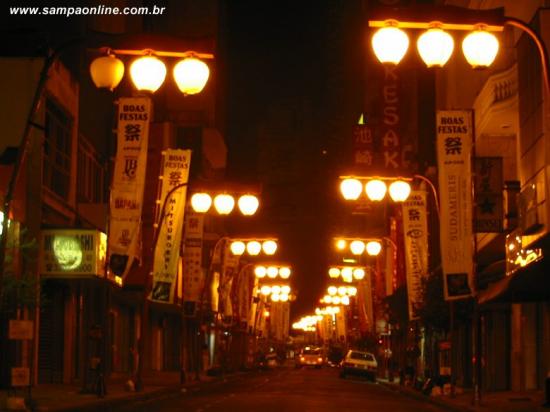
Liberdade
At the 50’s, however, serious problems started to arise and the city was growing at a disorderly pace. But, it was from that decade that more people began arriving to Sao Paulo. It was millions of “nordestinos” (people from Brazilian Northeast) that even today are arriving in Sao Paulo. The situation became worse when, at the 70’s, the oil crises happened and the economy started to get bad, very bad. In addition to stagnation, the inflation was out of control. In the 80’s things deteriorated further nationally due to drought in northeastern Brazil, which lasted 5 years in some states. The nordestinos wanted to escape from the semi-arid poverty, but instead of find opportunities to start a new life, they faced the poverty of living in Sao Paulo. Extreme poverty and cold (Sao Paulo gets very cold during the winter – duh – with beggars dying on the streets).
The slums began to appear everywhere, sometimes in just one week. It happened successive invasions of buildings and land and destruction of protected environmental areas. Moreover, many people built houses in places of danger and the inevitable happened: when the summer came, it was common to see in the news desperate people who have lost family members and all personal possessions in flood and in landslide (in Sao Paulo in the summer it rains as if the world was ending). It was official: there was no where to escape misery here in Brazil.
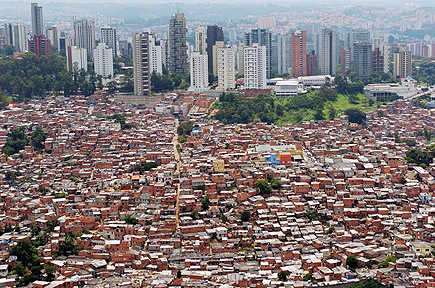
Paraisópolis, one of the biggest slums
The same was happening with the medium and large cities in the interior of the state. Some small towns have decided”to protect” themselves of migrants expelling them through little subtle ways. Of course, now it’s the time to talk about the skinheads. Fanzines were distributed free and lower middle-class white kids started to like the idea, being seduced by a aggressive and opportunistic “ideology”, and hundreds began to make fatal victims throughout state. A new and improved violence had arise and until today these groups are killing people, although, after a terrorist attack against a synagogue in Campinas, these groups have become more discreet.
However, the cruelty does not stop there. Above I said that the city of Sao Paulo is composed of several cities, each with their own ways. Perhaps the only thing equal / homogeneous in Sao Paulo was the poverty in the periphery. Although there are slums in almost all districts, is on the distant periphery that lives this giant mass of migrants, with the exception of those living in “vertical slums” in the central areas. The biggest “vertical slum” building was the Treme-Treme (literally Shake-Shake) in which used to live 10 thousand people.
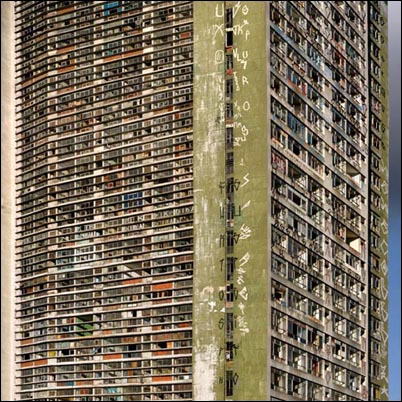
Treme-Treme
And the worst part is coming. The crack, which was reached at the 80’s, dominated the periphery and a specific area in the centre known as Crackland. The killings were constant and in one weekend, 50 man/kids were murdered. At the same time, as they hadn’t hospitals in these areas, the infant mortality rate was very, very high. Most schools remained open only for 2 hours in certain periods, because teachers were to scared to go to work or because the drug dealers called to school saying that “it’s time to close”. And the police, what the police did? At that time, the police in Sao Paulo was the most brutal in Brazil. The record of police killing is about 2000 in one year, only in Sao Paulo. And, when the police didn’t go to those places, nobody removed the bodies from the streets.
Finally, children and adolescents were massacred in a hellish pace by themselves or by the police. There were no schools, or hospitals, or jobs, there was only crack and guns pointed out to all sides. Another detail that can not be forgotten is with respect to the color of those who died in these places. There was one thing in common, they were all “non-whites”.
The white ones was being killed in the middle class districts, victims of robberies and kidnappings. The tension between the classes (and the colors) was increasing and the future was more uncertain and more sinister than ever. The rich people began to move to closed condominiums, high excluses places to really rich people. The biggest example is Alphaville in which live more than 30 thousand people. How to walk around in such insecure city? The richest began to buy helicopters. The upper middle class, armoured cars. But what about the “rest”? What the middle class could do? What the poorest could do? Killing each other wasn’t the solution and it was obvious that wait for governmental action was useless, because all spheres of government get everybody disappointed. Big time!
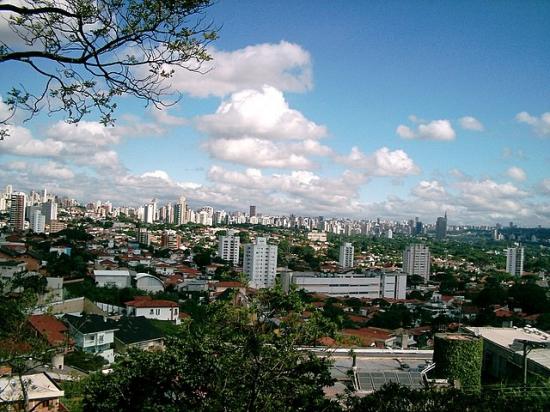
Pinheiros, middle class district
It was then that someone had a great idea “let’s stop waiting for the government and start doing something for our city?” And thus different sectors of society have begun to mobilize to start rebuilding the city, a task that is only in the beginning, but that is changing dramatically the lives of millions of Brazilians who live in there. So, once again, migrants and paulistanos are reinventing Sao Paulo, trying to build a future for themselves. For how long? I don’t know, however I really hope that this lasts for a long time because it’s the only option.
In a few days I’ll publish the other part of the article about corruption and urban decay of Sao Paulo.


